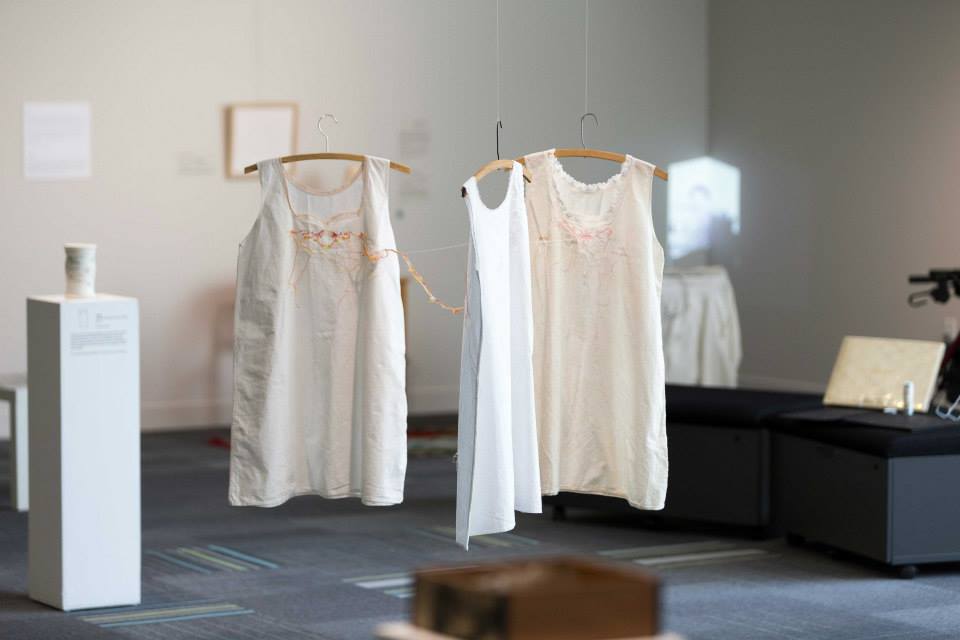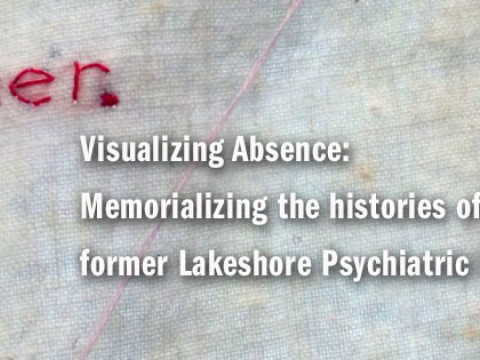Visualizing Absence: Memorializing the histories of the former Lakeshore Psychiatric Hospital grounds is a collaborative arts-based research response to archival images, patient records, and hidden and lost stories and memories that constitute Humber College’s historic Lakeshore grounds.
These grounds are traditional territory of the Ojibway Anishinaabe people who have lived along the Humber waterways and travelled extensively throughout the Great Lakes region. They know this area as Adobigok, or “place of the alders.” Their name for the region is where we get our modern-day Etobicoke.
The Lakeshore grounds and new and existing buildings are situated on a corridor along the Humber River where First Nations people travelled for thousands of years. We stand here today, where many Humber College students and their ancestors have walked (Charles, 2015).
Researcher and artist Anne Zbitnew, in collaboration with artists Ala Asadchaya, Alison Brenzil, Dave Clark, Stas Guzar, Susan Mentis, Lucy Pauker, and Hannah Zbitnew, use a variety of media to publicly recover untold hidden and forgotten histories. We respect the past by recognizing our research site as Aboriginal land, and by remembering the psychiatric patients who built, lived, worked, and died here.
This project follows Dr. Geoffrey Reaume (2000) and other mad historians, activists, artists and allies who tell stories in a historical context from a psychiatric patient perspective.
Turning the Lakeshore Psychiatric Hospital into a college is a fitting tribute to the patients who built this site with their unpaid labour.
Humber College is a place of education and enlightenment. By acknowledging the past, Humber recovers pieces of its own history and advances its community and cultural contributions to knowledge and awareness of contemporary Mental Health stigma (Males, 2014).



